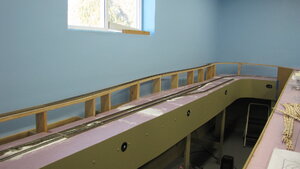Ima Train Wreck
Less than a Beginner!
So as I continue my odyssey of building my first ever layout, I need some guidance regarding a couple of things. With a basic understanding that things constantly change and technology is always providing us with new products and methods (some of which may not be any better or even as good) I am really interested in how you would do it now, if you were doing this today, not necessarily how you did it when you built your layout. Maybe you would do it the exact same way which is great, but if you were to start over and would use a different product / technique, that is what I am interested in.
Here is my current status:
Here is my current status:
- I am working to finish my benchwork.
- I am going to model HO modern era trains
- I have purchased the Digitrax Evolution Duplex DCC system
- I have done zero wiring or track laying.
- How do you operate your turnouts? I am considering servos used in remote control model airplanes. Good idea or bad idea?
- How do you power your turnouts and other accessories such as lights and such?
- How do you control your turnouts? For example with your DCC controller, with toggle switches, etc.
- Where do you get your turnouts? I have Atlas code 83 track, should I stick with Atlas turnouts or something else? Is there a magical place where they don't cost so $$$$ much?
- How far apart are your wire drops on your track? I am using 36 inch Flex track and was planning on have a drop on ever section. Too much, too little, just right?


